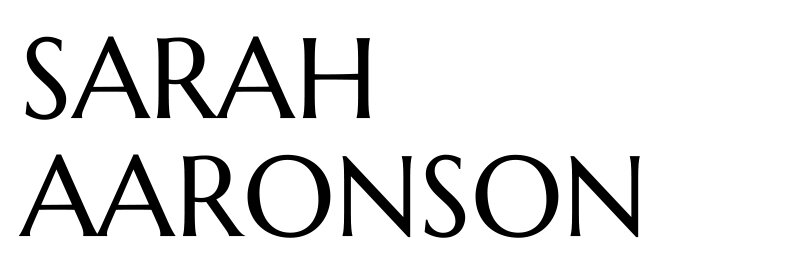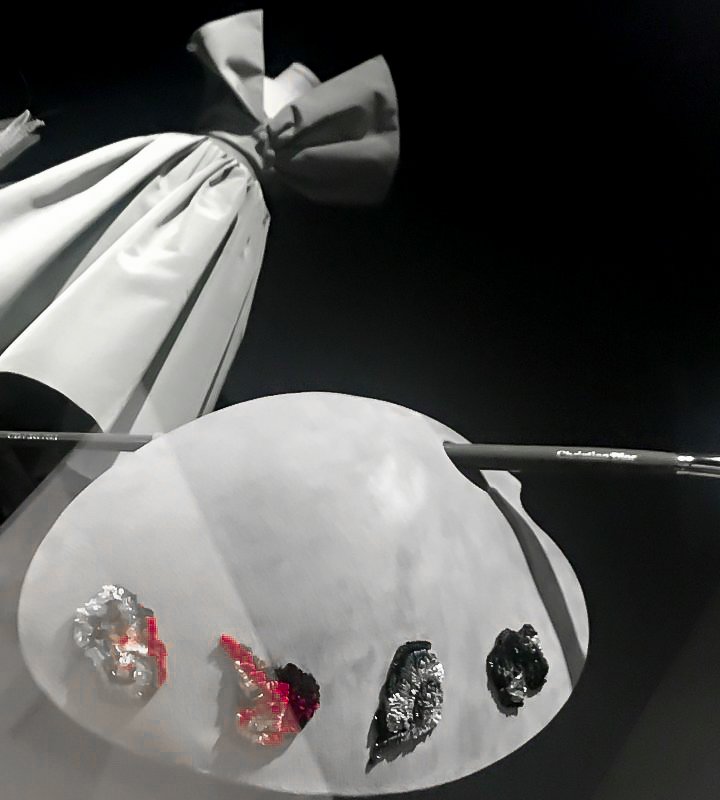THE MASTERPIECE
Olga Sherer modeling milliner Stephen Jone’s artist’s chapeau inspired by fashion illustrator René Gruau • Autumn / Winter 2007 Haute Couture Collection • John Galliano for Christian Dior
The artist’s palette has been a creative tool dating as far back as Ancient Egypt…. Though the palette is a tool of function used to create art, it can often be an Objet d'art in it’s own right, with it’s lasting display of vibrant colors, oily pigmented textures, and rich aging wood. The beauty of such palettes was wonderfully captured in Matthias Schaller’s photographs via Das Meisterstück, a 2015 exhibition at the Venice Biennale that gave visitors the unique opportunity to compare the palettes of art history’s greats. So why wouldn’t these surviving painting relics inspire a most creative chapeau? Leave it to the brilliant British milliner Stephen Jones to take on that task for John Galliano’s Christian Dior Fall 2007 Couture Collection…
Palette of Eugène Delacroix • Image courtesy of Musée Delacroix
“John Galliano drew romance and delicacy out of a show ostensibly inspired by painters, fashion illustrators, and photographers... Galliano approached it through the artistic landscape that formed Dior's imagination and the great talents who represented his work to the public in magazines. The opening sequence caught the black-and-white drama of Irving Penn's photography and the dashed-off pen-and-ink drawings of Eric, Gruau, Bouche, Bérard, and Cocteau. Color came in gradually, developing into extravagantly realized palettes taken from portraits of women by the Impressionists, Dutch masters, and Pre-Raphaelites…” • Sarah Mower for Vogue
Olga Sherer modeling milliner Stephen Jone’s artist’s chapeau inspired by fashion illustrator René Gruau • Autumn / Winter 2007 Haute Couture Collection • John Galliano for Christian Dior
”The exhibition consists of a series of photographs by German artist Matthias Schaller. The subjects of the photos are palettes of artists who have shaped the last hundred years of the history of European painting… The exhibition, entitled Das Meisterstück (“The Masterpiece”) reveals how the palette is a kind of “indirect portrait” of the artist and of his pictorial technique. Monumental photographs of the original palettes provide an unprecedented historical key to the use of colour, organisation of space and brushwork of the “portrayed” artists… Capturing the essence of 180 palettes belonging to over 70 of the greatest 19th- and 20th-century European masters, Schaller explores the unconscious of painting, or the “paint before the painting.”
Ad for Le Rouge Baiser • 1949 & 1982 • René Gruau • Image courtesy of René Gruau : Master of Fashion Illustration by Joëlle Chariau & Holly Brubach
Palette of Max Beckmann • Das Meisterstück • Matthias Schaller
Olga Sherer modeling milliner Stephen Jone’s artist’s chapeau inspired by fashion illustrator René Gruau • Autumn / Winter 2007 Haute Couture Collection • John Galliano for Christian Dior
Palette of Gustave Moreau • Das Meisterstück • Matthias Schaller
Olga Sherer modeling milliner Stephen Jone’s artist’s chapeau inspired by fashion illustrator René Gruau • Autumn / Winter 2007 Haute Couture Collection • John Galliano for Christian Dior
Palette of Giorgio de Chirico • Das Meisterstück • Matthias Schaller
Olga Sherer modeling milliner Stephen Jone’s artist’s chapeau inspired by fashion illustrator René Gruau • Autumn / Winter 2007 Haute Couture Collection • John Galliano for Christian Dior
Palette of Edvard Munch • Das Meisterstück • Matthias Schaller
Olga Sherer modeling milliner Stephen Jone’s artist’s chapeau inspired by fashion illustrator René Gruau • Autumn / Winter 2007 Haute Couture Collection • John Galliano for Christian Dior
Palette of Claude Monet • Das Meisterstück • Matthias Schaller
Olga Sherer modeling milliner Stephen Jone’s artist’s chapeau inspired by fashion illustrator René Gruau • Autumn / Winter 2007 Haute Couture Collection • John Galliano for Christian Dior
Palette of J.M.W Turner • Das Meisterstück • Matthias Schaller
Illustration entitled Lucky depicting Lucie Daouphars, the favorite model of Christian Dior • 1949 • René Gruau • Image courtesy of René Gruau : Master of Fashion Illustration by Joëlle Chariau & Holly Brubach
Palette of Pablo Picasso • Das Meisterstück • Matthias Schaller
Stephen Jones posing in a sea of chapeaus • Image courtesy of Hats : An Anthology by Stephen Jones in association with the 2009 exhibition at the Victoria & Albert Museum, London
Palette of Amedeo Modigliani • Das Meisterstück • Matthias Schaller
Milliner Stephen Jone’s artist’s chapeau inspired by fashion illustrator René Gruau • Autumn / Winter 2007 Haute Couture Collection • John Galliano for Christian Dior • Image captured by Simply Divine courtesy of the Victoria & Albert’s Christian Dior : Designer of Dreams exhibition
Palette of Eugène Delacroix • Das Meisterstück • Matthias Schaller
Olga Sherer modeling milliner Stephen Jone’s artist’s chapeau inspired by fashion illustrator René Gruau • Autumn / Winter 2007 Haute Couture Collection • John Galliano for Christian Dior






















